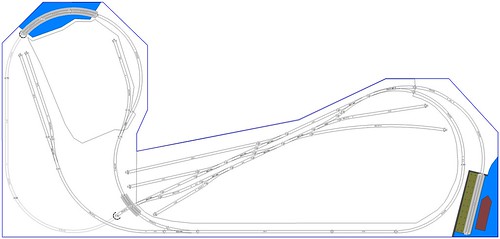Hi - I am fairly new to the forum, and I am in the process of designing a 11’ x 5’ L- Shaped Layout.
Some key characteristics/desires:
- Location is a spare room, of which I get to occupy half [:D]
- HO Scale
- Minimum radius 18", max grades 2%
- Time period early 1900’s, running small steam engines (2-6-0 and 4-4-0, maybe a 2-8-0) and 36-40’ freight cars
- Max train lenghts engine plus 5-6 cars
- Free-lanced
- Want continuous running - I built an earlier layout (all track operational, but no landscape) as an out and return back in loop, and did not like that I could not let a train just run and watch for a while without intervention
So far this is where I am with my design:
https://www.flickr.com/photos/150771392@N07/36830106820/
The plan is designed with Atlas 83 rail, just because that is what I have on hand from my earlier layout (with exception of a #6 1/2 Sinohara curved turnout).
In essence, I believe I was able to stick to above set parameters, although I had to go slightly above my maximum desired grades (max grade 2.5% as designed). I planned sidings for a small wharf/port (bottom left), and a small branch going to a mine (left layout wing). I may or may not include a turntable in the yard, just thinking it will get too crowded, and I won’t really need one to turn, due to the continuous run.
Any input is welcome!
Urs

